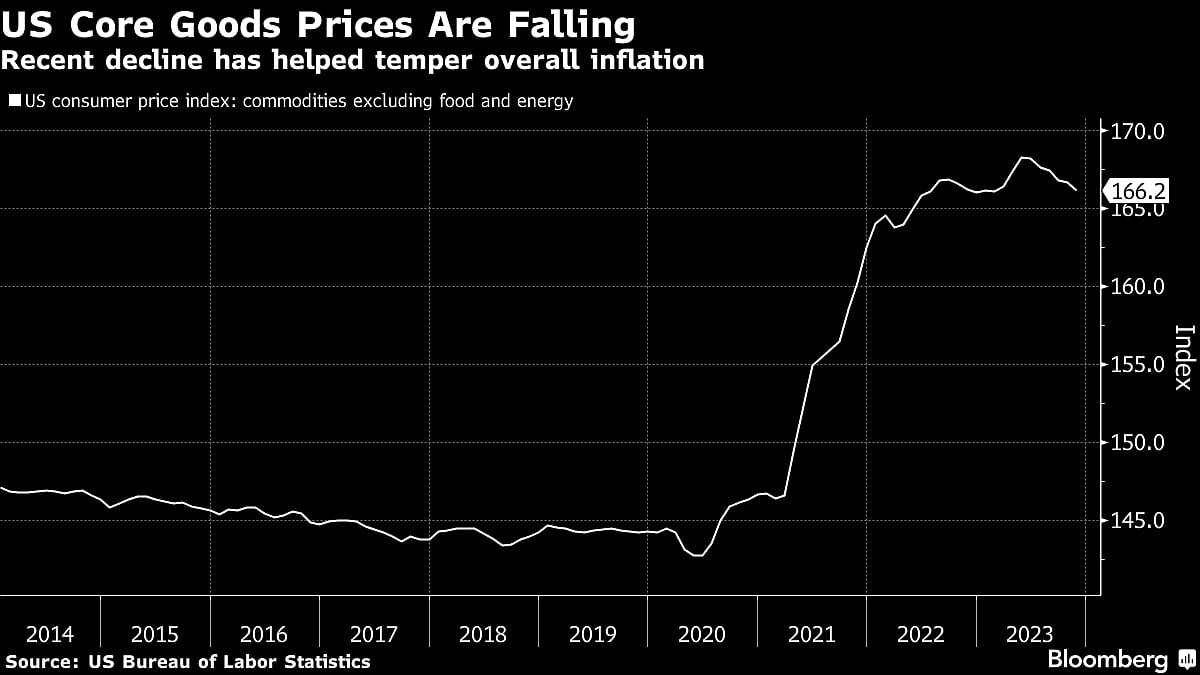U.S. CPI Report To Show Soft Core Inflation As Goods Prices Slide
The report will probably show the so-called core consumer price index, excluding food and energy, rose just 0.2% in December.

(Bloomberg) -- A monthly report on US consumer prices due Thursday will probably show another soft inflation reading thanks in part to more declines in the goods sector, according to Bloomberg Economics.
The report will probably show the so-called core consumer price index, excluding food and energy, rose just 0.2% in December, bolstering Federal Reserve policymakers seeking to bring inflation down, Bloomberg economists Anna Wong and Stuart Paul wrote Wednesday in a preview of the release.

December’s figures should “add to Fed confidence that disinflation is making encouraging progress,” Wong and Paul said. “Holiday discounts and imported disinflation from China likely drove a decline in core goods prices, while core services prices moderated.”
Read More: US PREVIEW: Core CPI to Soften, But Last Mile Likely to Be Hard
Core inflation has generally receded faster than Wall Street and the Fed anticipated in recent months, led by declines in core goods prices. They fell each month from June to November, beginning to chip away at some of the surge from 2020 through early 2023.
Now, forecasters see the Fed’s preferred inflation gauge ending the year around 2.2% — just above the central bank’s 2% target. That outlook assumes more deflation in goods, some moderation in services inflation and a step down in the pace of rent increases.
“Over the past six months, housing inflation has slowed to slightly above 5% at an annual rate. That’s still much higher than the 2.5% it averaged from 2010-’19, but it means there’s more room for disinflation to progress,” Wong and Paul said.
“Available market indicators, such as Yardi Matrix’s estimate of recently agreed-upon rents, suggest housing inflation should decline to 3.5% by the end of 2024.”
The Bloomberg economists also sounded a note of caution.
“Our house view is that underlying CPI inflation is running at a pace closer to 3% than the Fed’s 2% target,” they said. “The disinflationary impulse for core goods is likely to fade in the second half of the year as firms complete destocking excess inventories.”
The Bloomberg Economics team’s 0.2% estimate for the monthly change in headline index in December is in line with the median estimate in a Bloomberg survey of outside forecasters. Their estimate for the core index is slightly below consensus.
More stories like this are available on bloomberg.com
©2024 Bloomberg L.P.